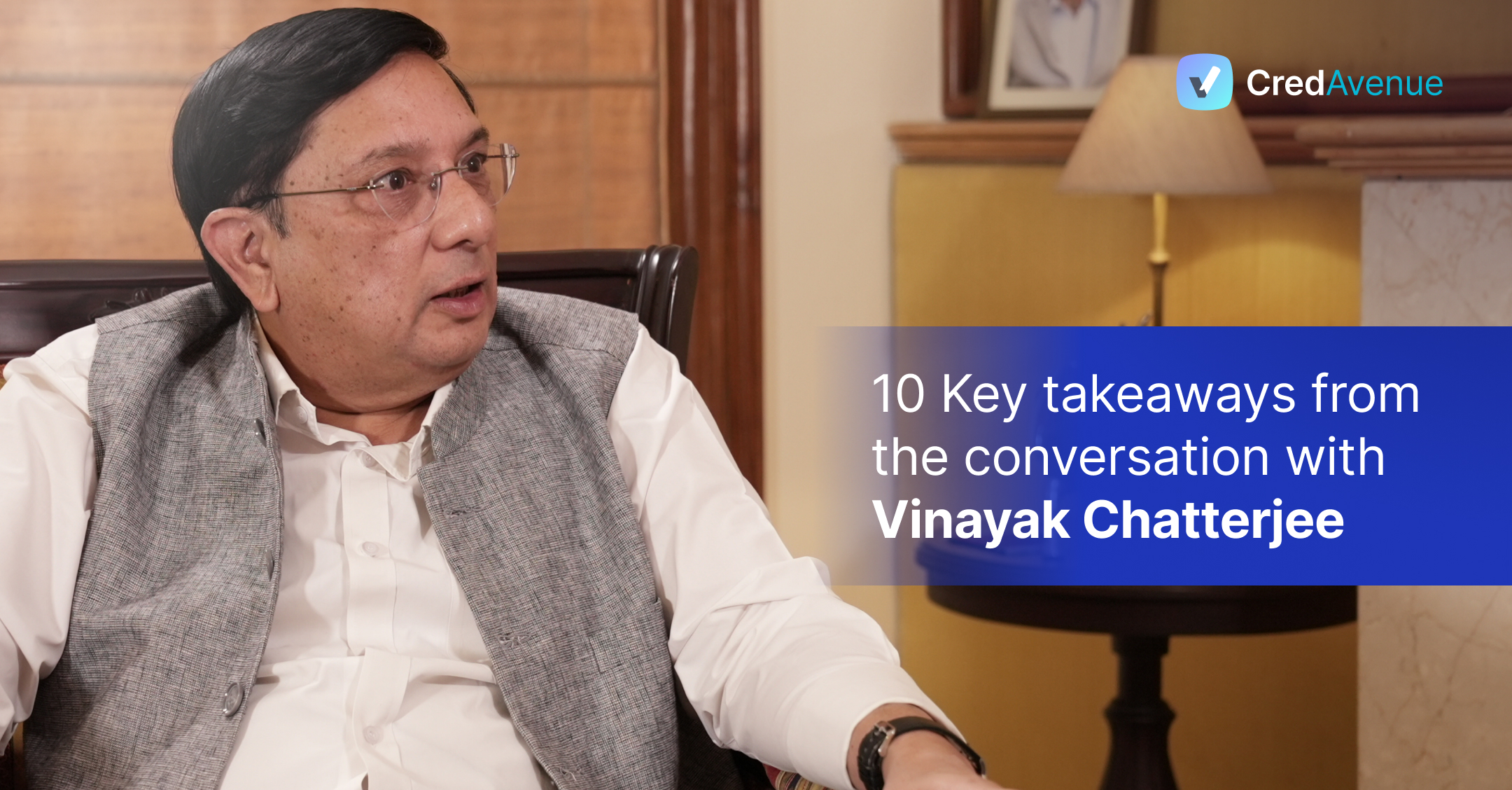
The words’ co-lending’, ‘alternative lending,’ even ‘fintech’ started making waves in the Indian markets around 2012-2014. Investors, borrowers, and even the government could not fully gauge the massive potential of these avenues that have now grown into niche markets.
Post the 2007-2008 financial crisis, stringent rules were put in place across major markets like the US and China. Around the same time, Indian markets were looking to catch pace with growth prospects and digitisation, cashing in on the rising entrepreneurial spirit. It was at such a time that the Indian markets saw the rise of a concept that could arguably be India’s number one bet on solving its rising credit crisis – Co-lending.
As the Indian economy grew at a neck-breaking speed, so did the credit gap. Mammoth growth in major sectors, rapidly changing consumer behavior, deeper internet penetration, and a friendly regulatory environment accelerated the credit demand in the country.
Now, debt financing could come to the rescue, but the tedious procedure, collateral requirements, and documentation did not make them the first preference. Banks did not quite enjoy ‘a business-friendly image’. And, NBFCs, the next natural choice, even with easy processing, struggled, owing to liquidity crunch.
How big a credit gap had we built up by then? – a few trillions!
The Co-lending concept
In layman’s terms, co-lending can be described as an arrangement or partnership model of lending/financing between two parties, for example, banks and NBFCs. While banks would bring their credibility and liquidity to the table, NBFCs would push on customer management, product innovations, quick documentation, data integration, and of course, their last-mile connectivity to even the remotest areas of the country. Co-lending as a concept promises to bring the best of both – banks and NBFCs, ultimately leading to larger credit infusion in the economy.
The very interesting thing to note is the formulation and application of this concept. Loans are distributed in a 20:80 risk-return ratio, with banks holding the higher value and NBFCs primarily sourcing the loan. The ratio can vary, but NBFCs need to retain at least 20% compulsorily on their books, in accordance with the RBI.
Here, the loans are jointly underwritten, guaranteeing maximum safety from a customer perspective and diluted risk from entities perspective.
After considering stakeholders and better operational flexibility to lending institutions, in a circular dated Nov 5th, 2020, RBI has permitted banks to co-lend with all registered NBFCs (including HFCs) conditioned to prior agreement. Now, as per the latest revisions in the co-lending norms, there exists 2 model operation
-
Joint lending /CLM 1
As per the prior consent of the two parties (NBFCs and Banks), both the lenders jointly underwrite and disperse loans to concerned parties in an 80:20 ratio. Their risk and reward are then shared as per the policy.
-
Reimbursement Approach /Back to Back Basis /CLM 2
Under this model, the minor lender /NBFC underwrites the loan. Under agreed policy terms (RBI’S credit policy), the loans are passed on to the major lender/ banks, who then reimburse them to the minor lender. The model has been in a positive light as it has been helpful in reducing turnaround time for decision making and credit supply, thus providing increased customer satisfaction.
All things considered, India’s MSME sector alone faces a credit gap of Rs. 25,800 billion And here’s how co-lending can bridge this gap
5 ways in which co-lending is aiding India’s credit gap
-
Ushering liquidity
Capital markets in India present an interesting story. While equity markets are robust and well-oiled, the debt markets are still quite emerging. PSUs and bonds issued by State and Centre constitute more than 80% of debt volume in the country. Even still, their contribution to credit lending is unimpressive. This is no surprise as dealing with the debt market has traditionally been quite cumbersome.
As debt markets lack active participants and remain stifled with conservative rules, regulations, and policies, they cannot be India’s bet on solving the credit gap. The next spotlight then falls on the pillars of the financial world – Banks.
It is futile to look for liquidity anywhere but banks. Indian banks, positively hold enough liquidity to fund a few economies on the globe. Nevertheless, the same liquidity could never reach the hinterlands of the economy, given several socio-political factors and other issues.
But, this is exactly where co-lending is bridging the gap – combining the best of the credit worlds. Cashing on the banking system’ brand image, network, and unlimited access to credit, NBFCs/fintech and startups are trying to fill in the credit holes using their demographic understanding and last-mile connectivity. Of course, tech-first companies such as CredAvenue bring in the tech DNA and AI to seamlessly intergrate data and provide advanced real-time analytics, , implementing international lending models with constant financial innovation in the credit space. Co-lending is predicted to disperse Rs. 300 billion by FY23.
-
Bringing ecosystem stability
The concept of co-lending has grounded the long-standing debate of ‘Banks vs. NBFCs’. With their own potentials and drawbacks, both worlds needed to come together to execute meaningful co-lending.
Both these entities function differently, have different regulations, and yet commit to a partnership to bring in standardised control, compliance, and customer satisfaction.
Besides this, double underwriting, Government risk management, and negligible corruption have proved that lending institutions, despite coming from co-parallel industries, can run in harmony and, in the near future, solve one of India’s biggest problems and hindrance in development — credit access and related infrastructure.
India’s need for its two most important credit pillars (the Banks and NBFCs) functioning together has finally seen the light through co-lending, bringing a never-seen ecosystem stability in the lending world.The debate should no longer be ‘Banks vs. NBFC’ but ‘Banks and NBFC vs. traditional lending’ because this journey from ‘vs.’ to ‘and’ is steering the credit market of the country in the right direction.
-
Introducing technology to the credit offering
Banks have traditionally struggled with higher operating costs, excess documentation, and paperwork and lacked the last mile connect. But co-lending has given a new hope on the tech and scalability of banks.
Right from pioneering digital lending to AI underwriting, e- documentation, improved tech for KYCs, auto bookkeeping, advanced accounting systems, and more, co-lending, through NBFCs / Fintechs/ Neobanks is trying hard to change how credit is supplied in the country.
Data and analytics look to completely disrupt the lending industry, with tech promising to change the face of front-end customer management. Full-scale digitalisation is predicted for the industry, impacting industries right from automobile to agriculture, accelerated by the pandemic and co-lending protocol.
Through its fully integrated platform, Cred Co-Lend has transformed and become the one-stop solution in the co-lending ecosystem. With one of the fastest onboarding processes, a one-time integration for access to a full-time marketplace, end-to-end digital operations that optimize sales cycles, credit access and portfolio management, Cred Co-lend has successfully brought in the tech revolution to the credit systems.
-
Not just profit, but also risk sharing
Risk is the major defining factor for any financial activity, right from small-scale investing to large-scale borrowing running in billions of dollars. It is no different when it comes to co-lending.
While it is true that banks face the bigger blow (80% in most cases) when loans turn bad and also that RBI’s guidelines provide for NBFCs to be the decision-makers on loan agreements, borrowers, rules, and features of agreement and even be the point of contact, it cannot be the only point of criticism for co-lending agreements.
The co-lending model is a win-win in the long run for both NBFCs and Banks. The balance sheets of both the parties are not severely pressured and risk management becomes top priority. As the risk of default is diluted, profits are higher with well-managed risk.
Cred Co-Lend, through its platform, gives NBFCs and Banks a plethora of option to connect, explore and form partnerships. By the way of one-time integration, real-time operation and completely digitized portfolio management services, Cred Co-Lend has successful managed to usher a new credit wave in the country.
Small finance banks are allowed to get into the co-origination partnership of 100:0 only.
Also – this model is being explored between NBFC-NBFC – providing a better flow of funds to smaller and mid NBFCs.
-
Focussing on country’s backbone – MSMEs
The central nerve of the Indian economy, MSMEs – Micro, Small and Medium enterprises contribute 30% to India’s GDP, 50% to exports, and employ nearly 11 crore workers. Though a highly informal sector, it has been a pioneer in promoting entrepreneurship and building the country. However, MSMEs struggle immensely when concerned with credit.
SMEs alone face a credit gap of Rs. 30,000 billion. Banks have been notorious for favouring larger corporations, ignoring the acute credit crunch this sector faces. Though banks cannot predominantly be blamed as most of the MSMEs lack credit history,
The Government of India, through various programmes and initiatives like Credit Guarantee Trust Fund for Micro & Small Enterprises (CGTMSE), Emergency Credit Line Guarantee Scheme (ECLGS), Credit Linked Capital Subsidy for Technology Upgradation (CLCSS), Micro & Small Enterprises Cluster Development (MSE-CDP), etc., has tried to provide relief to the sector’s credit problem. The Government has also doubled the Budget allocated to MSMEs in FY22 to Rs. 157 billion all along also amending the SARFAESI Act (Minimum loan size of debt recovery reduced to Rs. 20 lakh from Rs. 50 lakh). Despite sincere efforts, the on-ground impact remains minuscule. For instance, only 10 million benefitted from ECLGS out of 63 million MSMEs. A Rs. 100 billion fund to accelerate MSMEs potential remains yet to be utilized.
But co-lending is here to disrupt the various nuances and issues of the MSME sector, hand in hand with technology and digitalisation. Right from AI to digital/physical distribution engines, to creating alternate data sets for underwriting, to formulating supply chain financing, NBFCs/fintech are doing everything for faster and more advanced lending. This is likely to give an impetus to the starved credit market, making credit accessible to worthy MSMEs who may have been left out in the lurch due to poor credit history. When credit-behemoth banks join hands with NBFCs and fintechs through co-lending models, liquidity and lending is expected to increase multifold. Initiatives like revenue-based financing and embedded finance solutions are breaking hardened shackles to ease the credit gap in the country.
The future
Co-lending is currently at a very nascent stage in India, and its future is hard to predict.
While co-lending plays to the strengths of the banks and NBFCs, its critics say that the weakness of both could heavily weigh down its prospects. Betting on banking liquidity and NBFC niches could pay off, or may make the RBI poorer by a few lakh crores, like in the cases of IL&FS, DHFL, or even Reliance Capital (finance houses floated by corporates that, despite RBI monitoring, lost public deposits close to Rs. 1,000 billion).
However, the pandemic has dealt an interesting twist in the tale of lending institutions. With digitalisation becoming a need more than a luxury, along with deeper penetration of the internet and smartphones, co-lending has its once-in-a-century opportunity to shine and overhaul traditional banking in the country forever.




